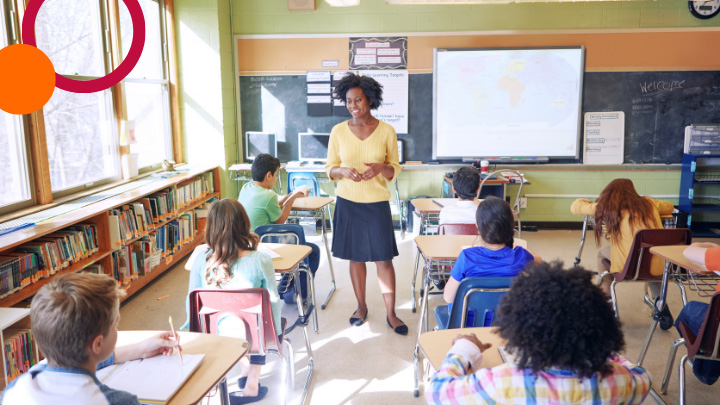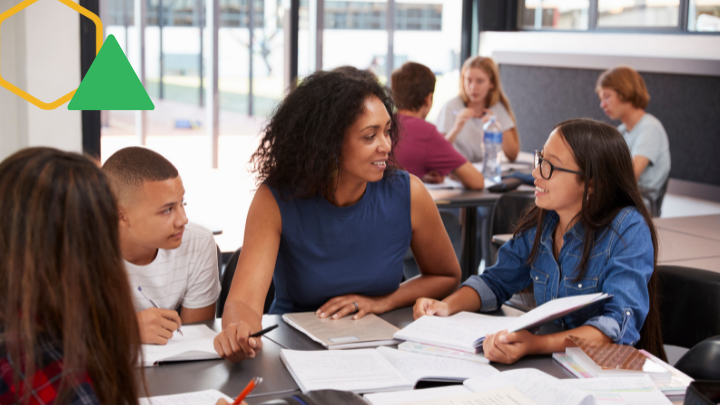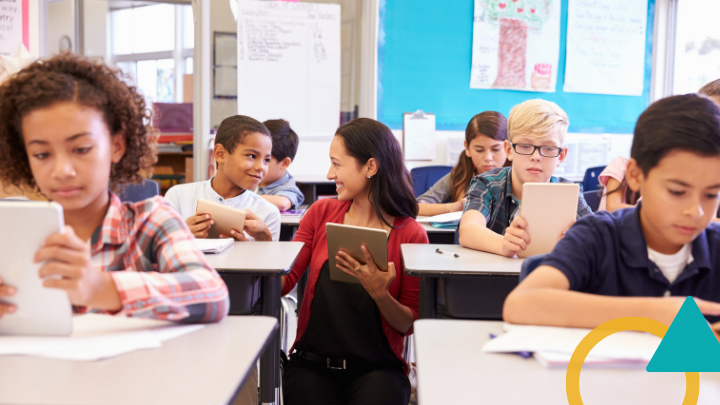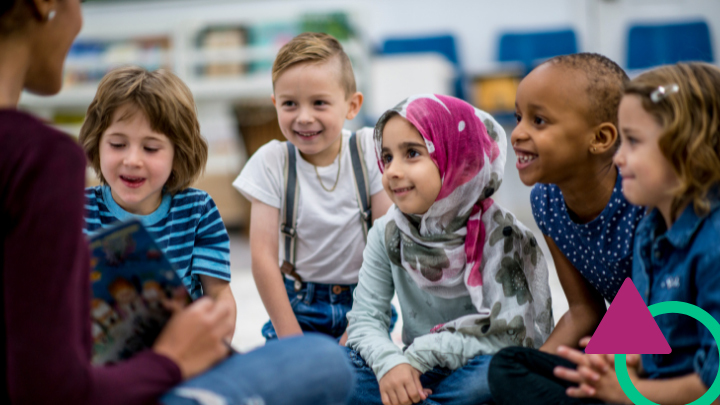In the last week of October, one week before the 2020 U.S. election, I facilitated a virtual workshop entitled, Anti-Racism Fundamentals: Building Understanding about Race in Mostly White Classrooms for members of a district’s DEI task force. About halfway through the two-hour event, we were discussing a slide that featured four elements of Paulo Freire’s critical consciousness. The participants shared a few responses to each of the elements, and then they dug into one: Awareness of Social Issues.
It started with a message in the chat: “Teachers want to stay away from social issues.” Another participant unmuted, repeated the message from the chat, and said “I think they would be more willing to address those if they knew how to keep sort of their own—I think people are afraid to impose their own views on the situation with students because that becomes sort of a danger zone and how can you tackle social issues without imposing your thoughts, your views? You have to be awfully careful. I think people are, in some cases, are unwilling to take those risks right now and I can’t blame them. People are afraid of making that single mistake that could be costly.”
The person who initially wrote in the chat unmuted and added, “If you talk about—and it’s on the agenda—how zero-tolerance policies inherently create more problems for marginalized groups. Now, you’re going to have some people say, “That’s not true.’ And they go home and tell Mom and Dad, ‘Hey, this is what Mr. X says. He’s some sort of Marxist liberal that wants us to look at everything through the lens of power.’ And now I’m getting into trouble because I’m trying to open up kids’ eyes…and I put myself in a position where I’ve given my personal opinion about something and I’m leading my students in a direction of thought, which we’ve been taught for years not to do. We are supposed to be neutral deliverers of information. We’re not supposed to pick sides even when the side is right (in our opinion). So to me, that’s the tightrope that our teachers feel that they might have to walk.”
I paused, and when no one else jumped in, I shared my initial thoughts.
I shared the necessity of discussion agreements or guidelines when talking about race and other identities. I also pointed out that our system of education is not neutral. BetterLesson has an entire workshop dedicated to this, titled, Systemic Racism: Identifying How it Shows Up in Schools. So the first step is letting go of the notion that doing things the way they have always been done is neutral. It’s not. The brilliant Archbishop Desmond Tutu illustrated this when he said, “If you are neutral in situations of injustice, you have chosen the side of the oppressor. If an elephant has its foot on the tail of a mouse, and you say that you are neutral, the mouse will not appreciate your neutrality.”
However, I think the question underneath the original question was this: How can we enable students and staff to meaningfully talk about racism and current events in a way that pursues racial justice and enables all stakeholders to remain engaged? And that question required a lot more thought. Below are the key ideas and individuals that helped me attempt to construct a response worthy of the question in the weeks following the workshop.
Make dignity non-negotiable.
As Jonathan Gold explains in this Teaching Tolerance article, making dignity non-negotiable is not as simple as including multiple perspectives. He writes, “Talking about perspectives without talking about power can imply an equivalency of viewpoints that brings with it a very real danger of erasing…injustice.” We can have disagreements in our classrooms, but we need to specify that a person’s or group of people’s humanity is not up for debate. Upholding the dignity and humanity of others must be a core principle of discussion in classrooms and among colleagues if we want to engage in generative conversations. Students and teachers can decide the specifics of what that looks like in co-constructed discussion agreements. The book, Dignity, by Donna Hicks lays out ten elements of dignity, which has helped me consider what this looks like in practice. Agreements that stem from her work could include: help others feel like they belong; listen to understand; and if you violate a person’s dignity, apologize, and commit to change. For a step-by-step strategy on how to develop discussion agreements with your class, check out this strategy. Honoring the humanity of others is more important than ever for our students as COVID and building closure has heightened anxiety and left many students wanting deeper social connection and a sense of belonging in a class community.
Exercise your own discussion muscles.
I also looked to the academic research of Cherie Bridges Patrick, who identifies four discourse capacities for generative discourse on race and white supremacy: a liberating, dialogic environment, adaptability; a readiness and willingness to engage; and vulnerability. These four skills helped me understand the necessity for the inner work required of each person to engage in meaningful conversations. In a class lesson or in a staff meeting, the facilitator (i.e., the teacher or principal) must commit to building up these capacities and modeling for discussion participants. This is difficult, but necessary work and its impact is widespread. Routinely creating formal spaces for fruitful conversation will carry over to breakout rooms or informal conversations after school and online. This is critical because white supremacy cannot be rooted out after one conversation, lesson, or professional development workshop. To help colleagues reflect on and build up their own discourse capacities, try implementing this staff conversation strategy. For additional ideas for strengthening your own conversational capacity, check out this list from Barbie Garayúa Tudryn at Teaching Tolerance.
Embed identity, oppression, and resistance into your curriculum.
In addition to building the skills for conversation, I’ve always believed teaching for racial and social justice required a centering of justice-based content as well as pedagogy. Gholdy Muhammad’s book, Cultivating Genius, provides such a framework. Muhammad’s research identifies four “pursuits” that were central to historical Black literary societies in the United States: identity development, skills development, intellectual development, and criticality.
Whereas skills and even intellect are fairly commonplace in educators’ lesson plans, identity and criticality are less common. As teachers design units and lesson plans and leaders support teachers to engage in original lesson design that meets the needs of their students, we can ask the question: How does this unit or lesson help students 1) learn something about themselves and/or about others? and 2) think deeply about power and equity and the disruption of oppression? For guidance, follow the steps in this strategy from our BetterLesson Lab. If students are struggling to show up to class, one way to increase motivation is to design lessons and units that center identity and address the oppression students directly experience in their own lives and/or are hearing about in the news.
Create opportunities for students to say something new.
The final work I consulted was recommended to me by another educator in a different virtual workshop. This one is Not Light, But Fire by Matthew R. Kay. There are many valuable ideas in this book specific to talking about race in the classroom, from building community first to re-using various discussion structures and naming the type of conflict showing up in a class disagreement. However, the biggest “aha” moment for me was this line: “There is no more effective form of intrinsic motivation than the opportunity to say something new,” (p. 132). This idea made me consider what my students are actually producing.
I no longer teach high school, but I reflected on the college class I taught this semester, and I realized I had heard
far too many “That’s sad” kind of responses to texts that address oppression or “She’s amazing!” in response to texts that highlight the activists who resisted and are resisting the aforementioned oppression. When we dug into issues, it was mostly a regurgitation of the talking points heard on TV. It felt like a punch to the gut when I realized—I haven’t been pushing their thinking! I’ve been so focused on getting set up online and being flexible with deadlines and supporting students in 1:1 meetings, and all of the things teachers are all facing this year, that I forgot to ask a question that should be central to my dialogic pedagogy: Are they saying something new? The gut-punch was the answer: Nope.
This was the final key understanding for me. All of the previous key ideas are necessary building blocks to get to this point, but the balance between centering racial justice and embracing a multitude of ideas comes down to my ability to provide students with opportunities (and support) to be able to say something that adds to the conversation (and eventually publicly publish those ideas if they wish). To dive deeply into topics like white supremacy, I needed to ask better questions.
For example, whereas I spent the semester sharing examples of cultural appropriation and asking students to name it when they saw it, Kay enabled students to grapple with nuance by asking the question: What do Bigger and Gus’s caricatures reveal about their idea of whiteness? after reading a scene from Native Son. Kay lets students bring up related points about “playing white,” laying a foundation for the class to discuss later scenes in the book related to cultural appropriation, like when Mary asks Bigger to take them to a “real place” to eat. The opportunities Kay creates for students to share invites original ideas and deep self-reflection on their own forms of cultural appropriation.
Individual students may feel more comfortable sharing in different discussion formats. If you’re looking for new discussion strategies to try in-person or online, check out our resource bank of strategies. At a time when our students are flooded with information online, if we can help them meaningfully contribute to the conversation and see their potential to make change (another one of the four elements of critical consciousness from the workshop slide), we may help students connect with their agency, which widespread challenges like COVID and systemic racism have tried to take from them.
Some final thoughts.
As a researcher, I learned we don’t definitively “answer,” questions. Instead, we “address” them. So, to address the question at hand: How can we enable students and staff to meaningfully talk about racism and current events in a way that pursues racial justice and enables all stakeholders to remain engaged? We make dignity non-negotiable as evidenced by our shared creation of discussion agreements and holding each member accountable to them. We support all stakeholders to build both internal and external capacities that enable us all to engage in generative discourse. We don’t shy away from identity, oppression, and resistance; instead, we center these pursuits in each unit and lesson. Finally, we create opportunities for students to say something new, to self-reflect, to meaningfully add to the conversation, and to ask questions that will have us, as teachers, still grappling with the answers months later.







